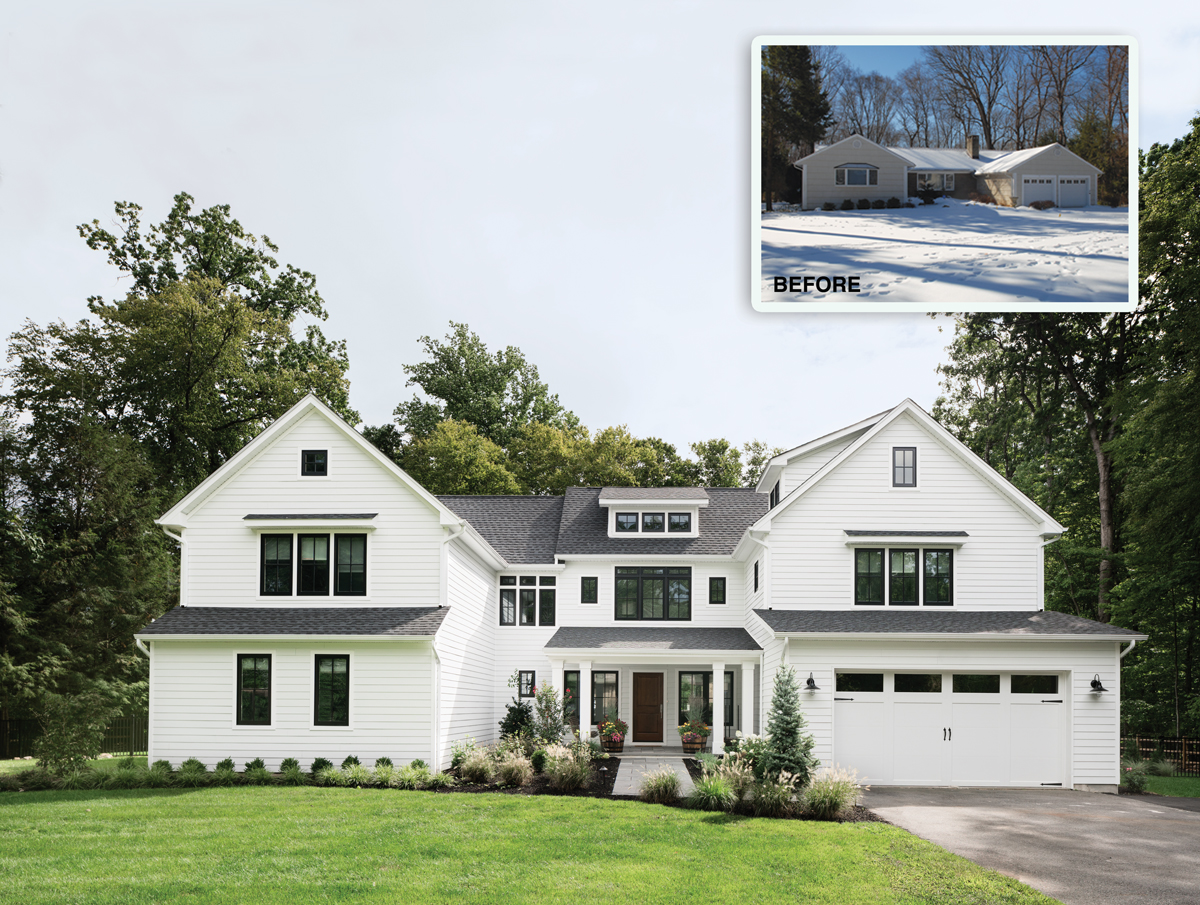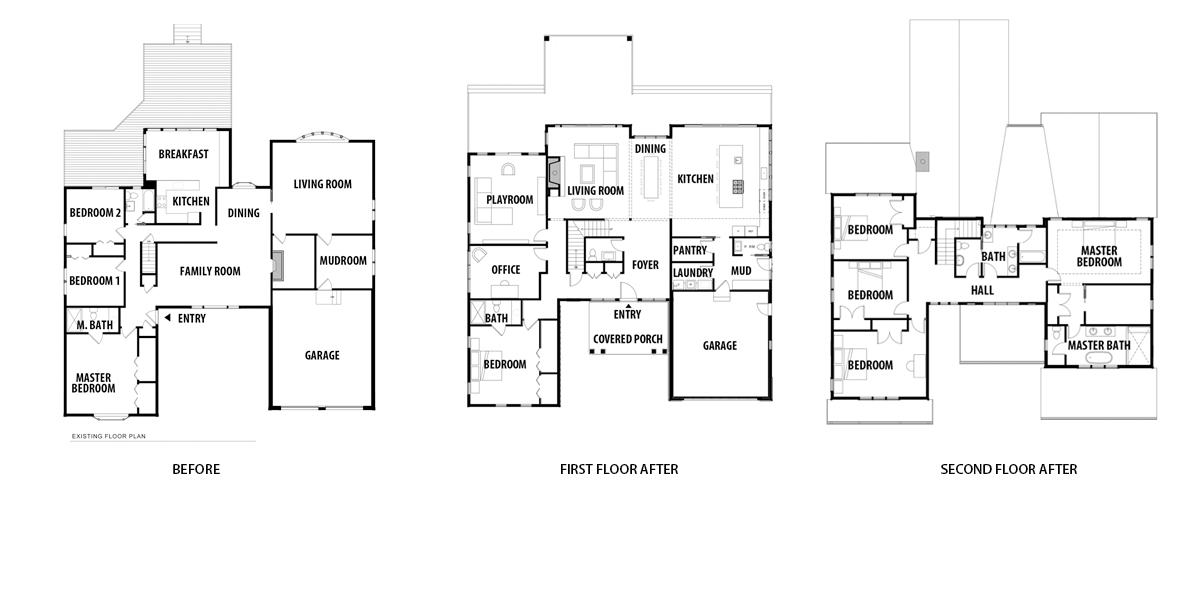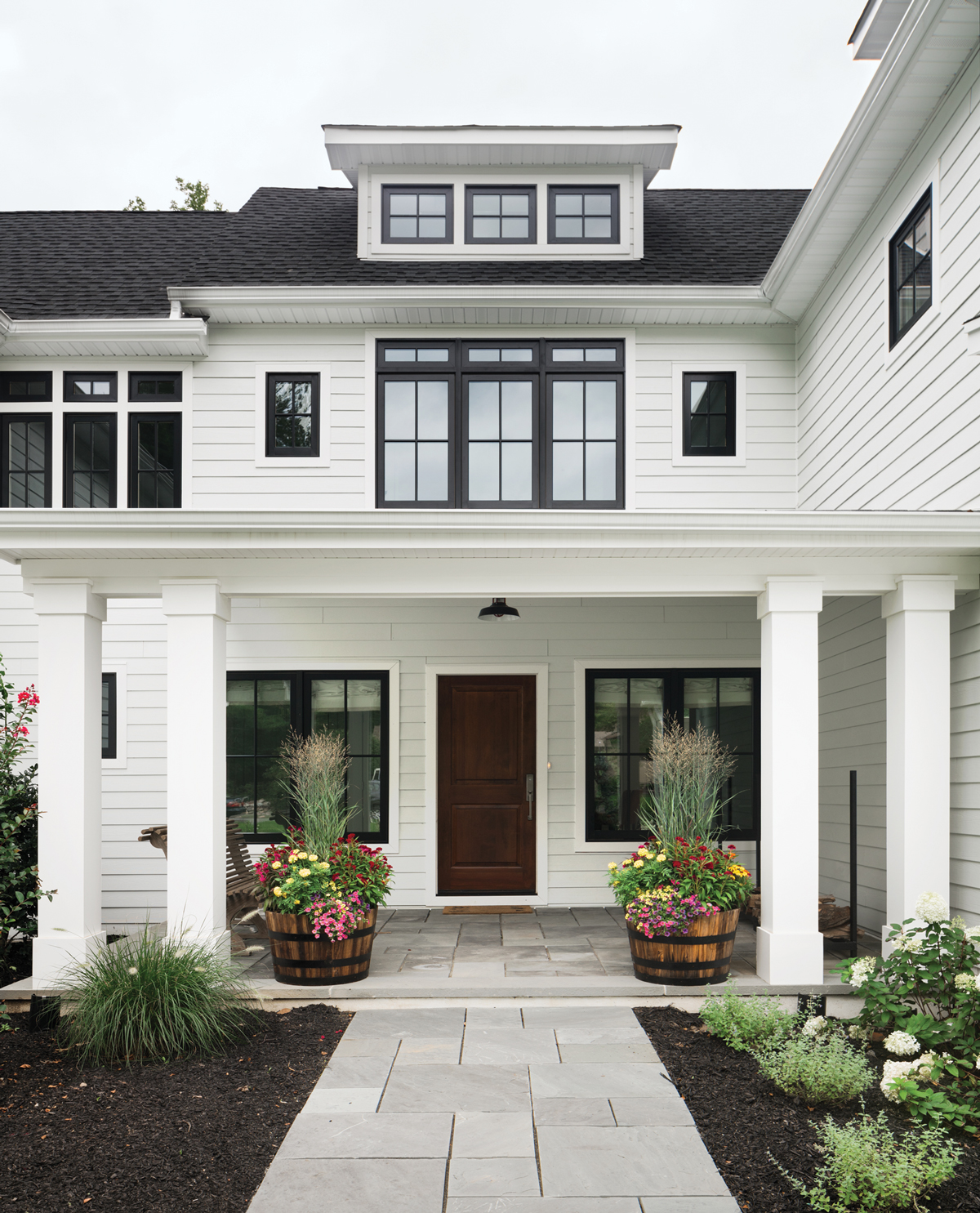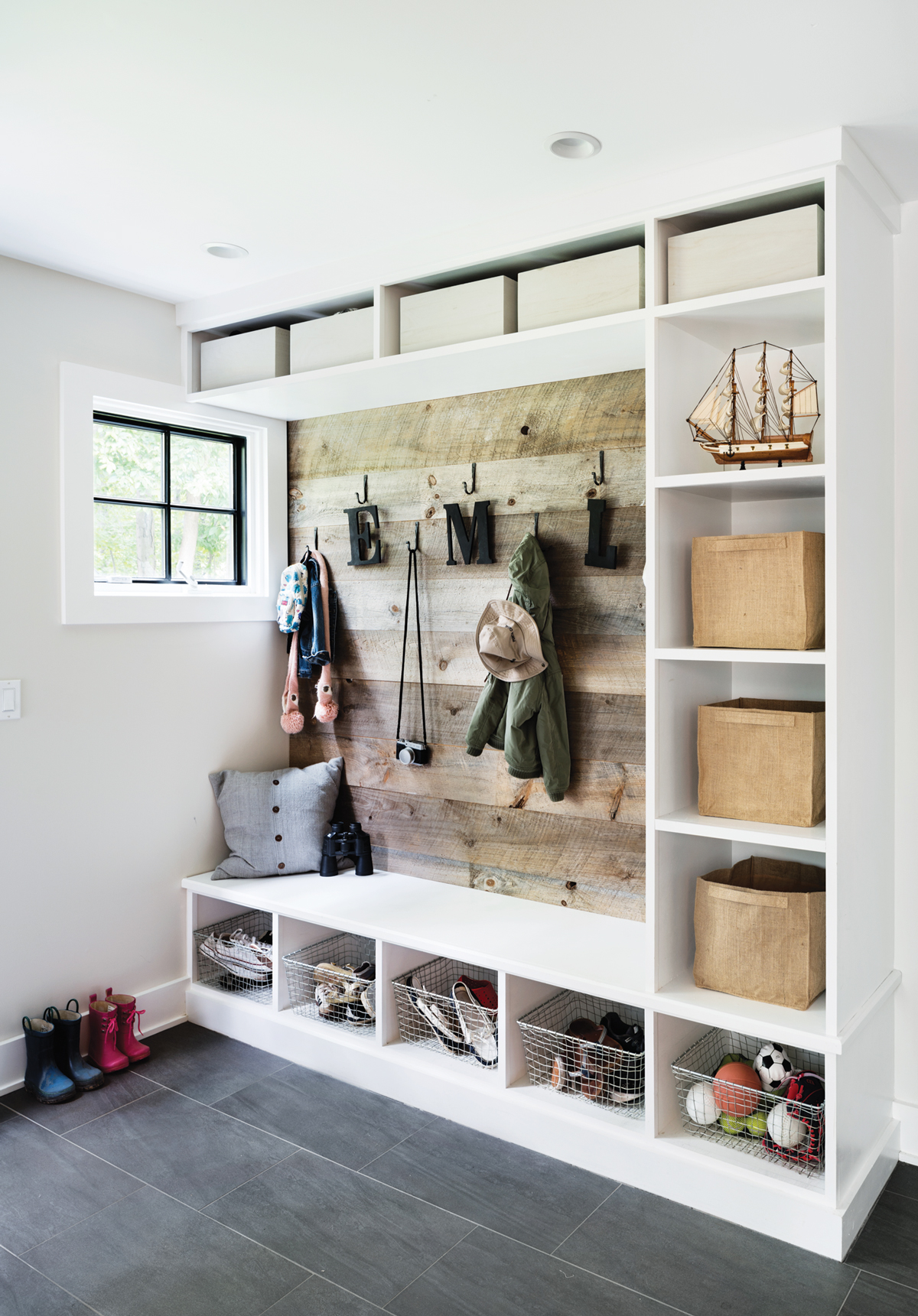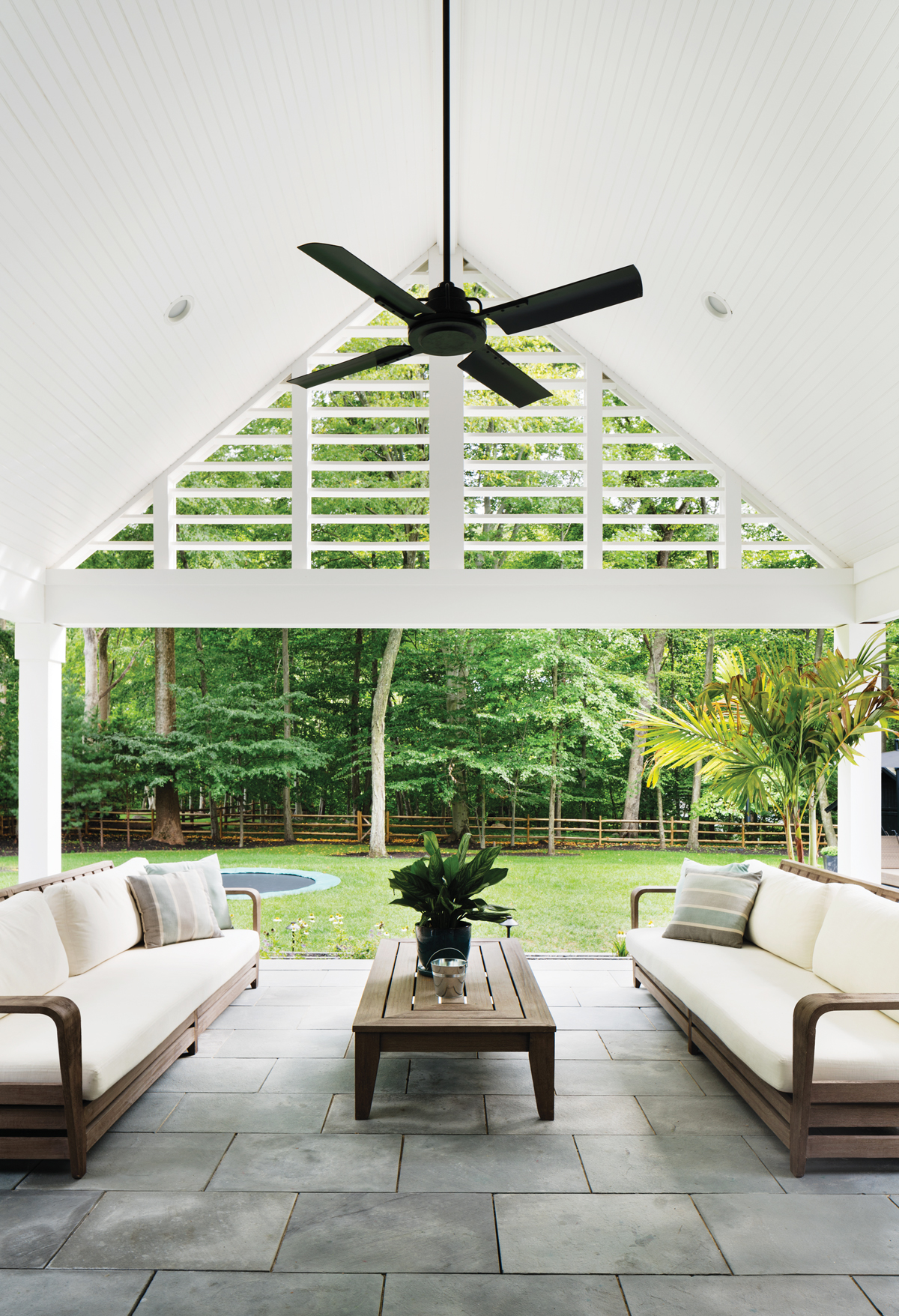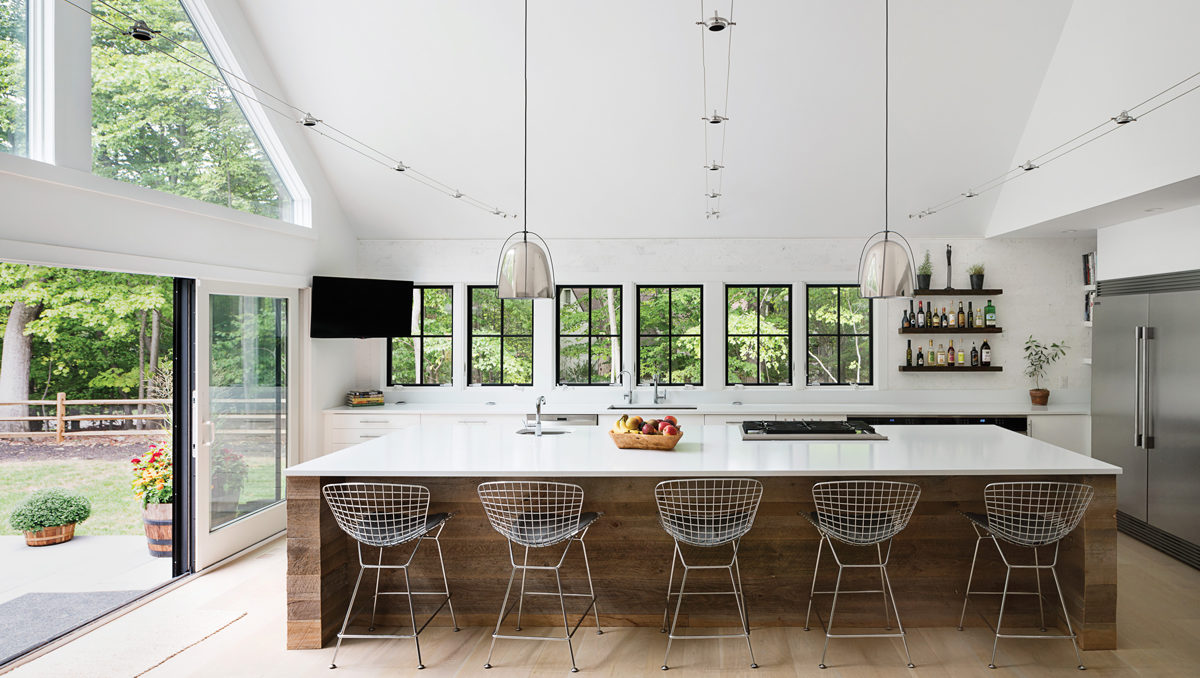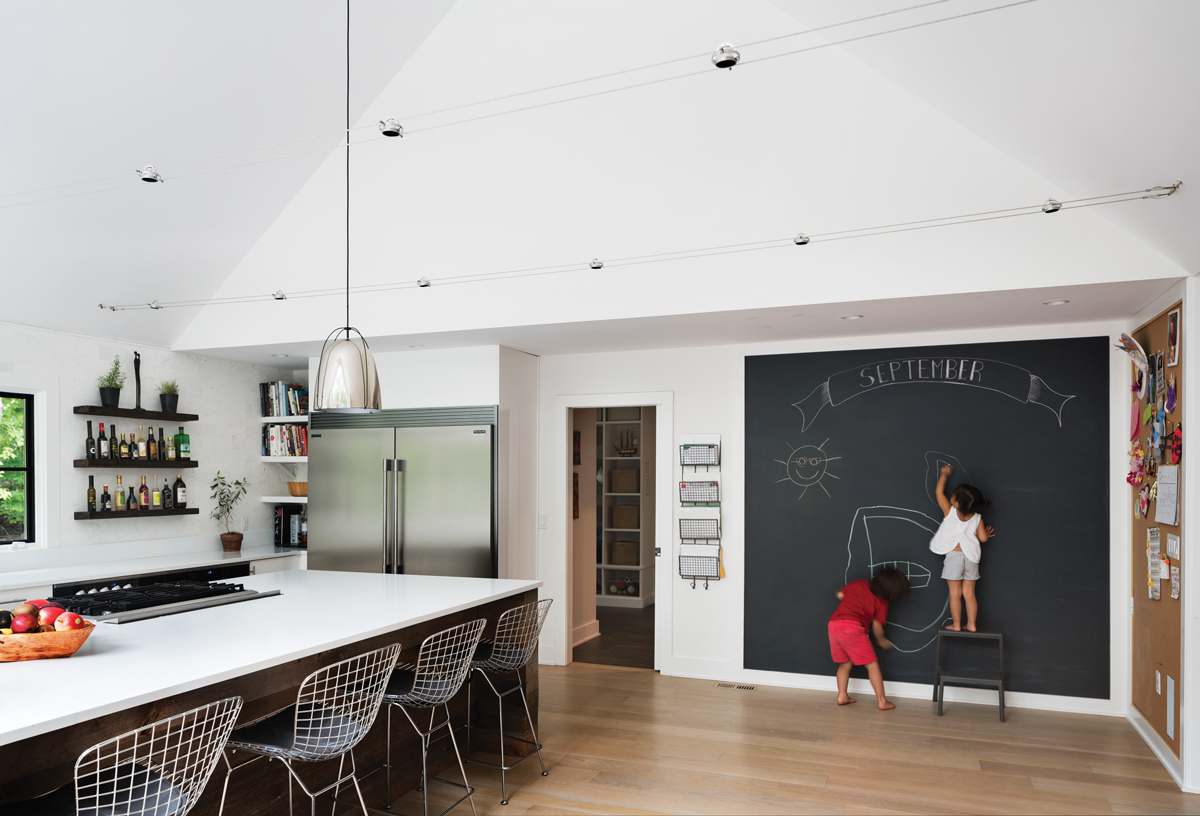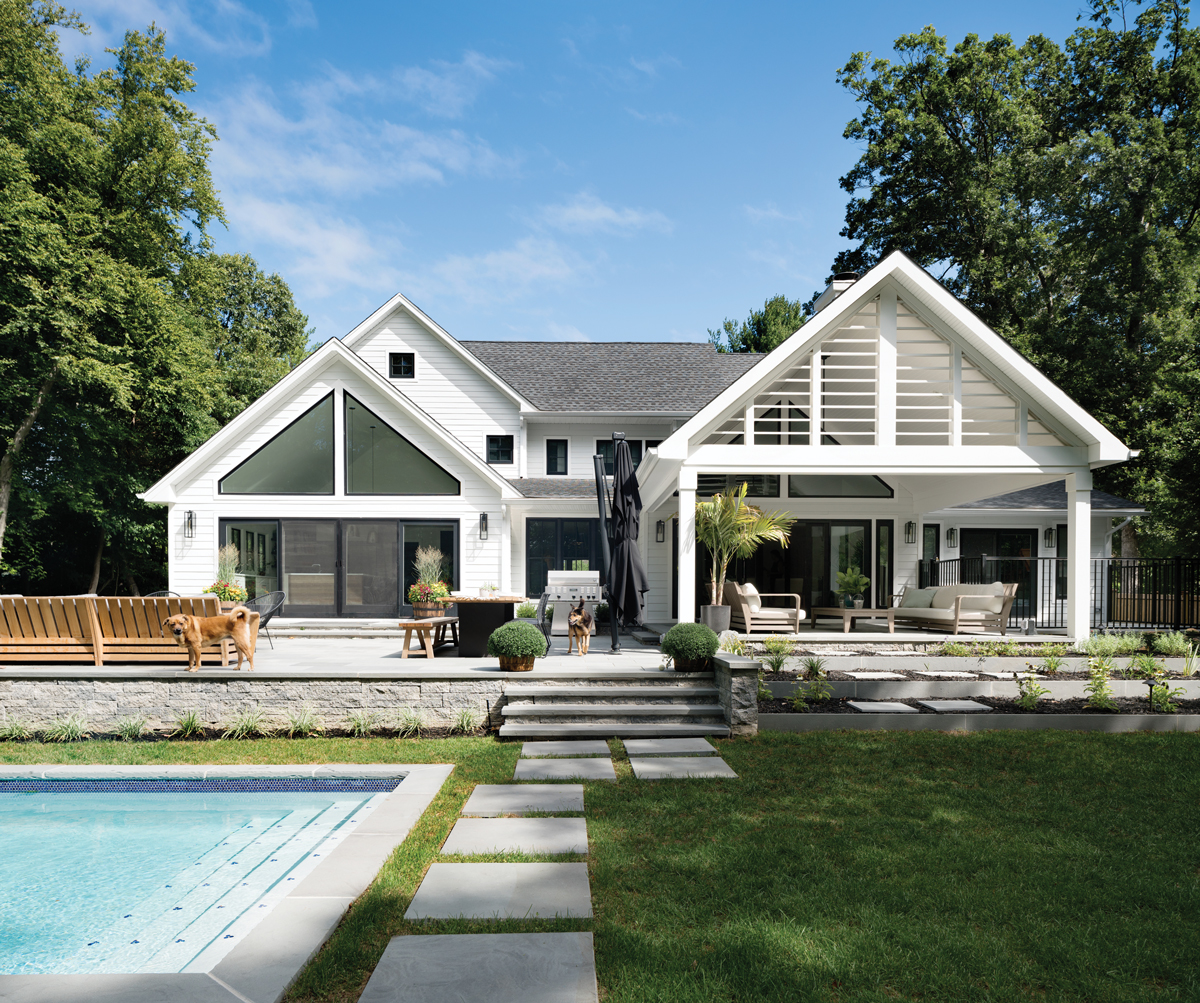An Entirely Different Story
Writer Marirose Krall | Photographer Amanda Kirkpatrick | Designer Z+ Interiors, Amy Brown, Mary Scro | Architect Z+ Architecture, Michael Scro | Location Upper Saddle River, NJA 1950s ranch rises up to become a modern farmhouse.
Sometimes it takes a professional to see past what came before and imagine something different. After a string of unfortunate renovations by previous owners had left the Upper Saddle River, New Jersey, home of Nicole Savikas Haenggi and Greg Haenggi sorely lacking in style, architect Michael Scro of Z+ Architects in Allendale, New Jersey, was able to do just that. The Haenggis called Scro shortly after purchasing the home, and he immediately saw the problem. “The house had lost much of its original strength and character because of additions that deviated from its volume and wealth of natural light,” Scro says. His solution was to create an entirely new style of home.
DNJ: How did you alter the original architectural style of this home?
Scro: The original structure was a standard ranch-style home—single story and devoid of any material distinction. Windows were haphazard in size and style, as the house had endured several ill-considered additions to the original footprint. Vaulted, low-pitched ceilings existed at the core of the house, along with larger panels of plate glass, indicative of the era it was built (1950s).
We altered the style by reacting to the owners’ desired program (adding a second floor with four additional bedrooms and several bathrooms) and their expressed predilection for a more transitional, modern style. Given the existing footprint had a “U” configuration—with narrow “legs” on each side—the proportions lent themselves well to taller, more narrow shapes consistent with a farmhouse style.
DNJ: What would you call the architectural style of the renovated home?
Scro: The style we introduced to the house could be called Transitional Farmhouse. It maintains the classic elements of the farmhouse style with steeply pitched gable rooflines, narrow/taller forms and tall windows with 2-over-2 lites. By specifying black windows with crisp, clean picture-frame trim devoid of crown or other adornment, the house is pushed into a more modern feel, which is why it can be deemed transitional in nature.
Shed dormers, chunky oversized square columns and simple, black lighting fixtures reinforce a modern edge that eschews more traditional details. While the floor plan/footprint of the house is ample, we were careful to control the scale and warm feel of the house. We aimed for comfortable and modest, which directly reflects the owners’ preferred lifestyle.
DNJ: Explain what the homeowners wanted from this renovation and how that was achieved.
Scro: Since the owners were moving from Hoboken, NJ to the suburbs, largely for the added amenity of the spacious and private back yard, it was always a clear intention to blur the lines between interior and exterior spaces. Massive expanses of glass, with glare and unwanted harsh light controlled by covered entertaining spaces and screening details, work in harmony to allow for a rich, unencumbered relationship between the yard and the living spaces within.
The homeowners’ love of cooking, especially in front of friends and family in a quasi-theatrical fashion, inspired the kitchen layout. The central focus in the kitchen is a singular, powerful island. Minimal cabinetry, especially upper cabinetry, which were replaced with open shelving and windows, refocuses the eye to the reclaimed timber-clad island. The kids can make the space their own as well by using a large chalkboard, which allows for constant change in the otherwise understated classic, minimal kitchen.
DNJ: What were some of the challenges of this project?
Scro: The principal challenge was focusing on undoing the poor additions that had accumulated over the years while simultaneously developing a home that is comfortable and cozy, yet uncluttered and minimal.
The existing “U” floor plan created a challenge to integrate spaces and flow without leaving two sides of the house disconnected. We tackled that challenge by assigning one side to be filled with quiet, introspective spaces such as a guest bedroom and a home office. The other side of the “U” we introduced as support spaces, such as a mudroom, a pantry and a laundry. By separating the quiet spaces from the more frantic support spaces, we gave the plan logic and transformed the weakness into a strength. Filling in the middle of the “U” with the spaces where daily life happens allowed for a flow to each of the sides with minimal dedicated circulation space such as hallways. This reinforces the more modern/transitional approach by establishing a visually integrated, open plan that still allows for defined spaces and avoids looking generic.
An additional issue we encountered was not related to the house but to the family itself. After laying out plans that met all objectives, the good news of an additional child on the way created a design dilemma. Determining how to maintain the vaulted spaces of the first-floor living area while finding room on the second floor for another bedroom threw quite the monkey wrench into our plans! But, as often happens, such constraints inspired even greater creative results. The owners liked the revised layouts even more than the originally approved plans. Keeping an open mind and allowing for disruptive moments to fuel creativity is critical to any successful renovation/addition project.
DNJ: What do the owners like best about their home?
Scro: It’s safe to say that it was a lifestyle transition for the family to move from an urban center to a more suburban neighborhood. The house helped reinforce and remind them why they sought such a move in the first place. Enhanced access to nature, air and light in the living spaces, along with transitional features such as covered entertaining spaces that blur the line between inside and out, eased the move from the conveniences of the city. The refined, clean and elegant lines of the exterior and the minimal but warm interiors of the house reflect the comfortable, relaxed lifestyle of the family. The owners are pleased that they don’t need to transform their lives around the constraints of the original house. Rather, their redesigned home accommodates their lifestyle.

